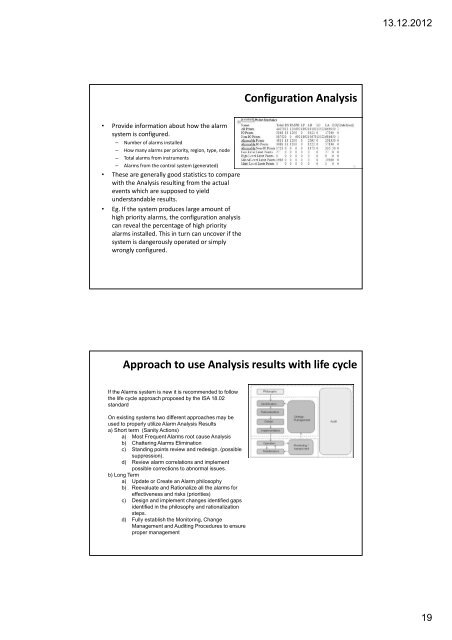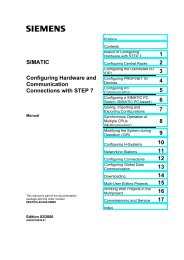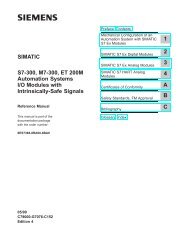SCADA and Alarm Management - DCE FEL ČVUT v Praze
SCADA and Alarm Management - DCE FEL ČVUT v Praze
SCADA and Alarm Management - DCE FEL ČVUT v Praze
Create successful ePaper yourself
Turn your PDF publications into a flip-book with our unique Google optimized e-Paper software.
• Provide information about how the alarm<br />
system is configured.<br />
– Number of alarms installed<br />
– How many alarms per priority, region, type, node<br />
– Total alarms from instruments<br />
– <strong>Alarm</strong>s from the control system (generated)<br />
• These are generally good statistics to compare<br />
with the Analysis resulting from the actual<br />
events which are supposed to yield<br />
underst<strong>and</strong>able results.<br />
• Eg. If the system produces large amount of<br />
high priority alarms, the configuration analysis<br />
can reveal the percentage of high priority<br />
alarms installed. This in turn can uncover if the<br />
system is dangerously operated or simply<br />
wrongly configured.<br />
Configuration Analysis<br />
Approach to use Analysis results with life cycle<br />
If the <strong>Alarm</strong>s system is new it is recommended to follow<br />
the life cycle approach proposed by the ISA 18.02<br />
st<strong>and</strong>ard<br />
On existing systems two different approaches may be<br />
used to properly utilize <strong>Alarm</strong> Analysis Results<br />
a) Short term (Sanity Actions)<br />
a) Most Frequent <strong>Alarm</strong>s root cause Analysis<br />
b) Chattering <strong>Alarm</strong>s Elimination<br />
c) St<strong>and</strong>ing points review <strong>and</strong> redesign. (possible<br />
suppression).<br />
d) Review alarm correlations <strong>and</strong> implement<br />
possible corrections to abnormal issues.<br />
b) Long Term<br />
a) Update or Create an <strong>Alarm</strong> philosophy<br />
b) Reevaluate <strong>and</strong> Rationalize all the alarms for<br />
effectiveness <strong>and</strong> risks (priorities)<br />
c) Design <strong>and</strong> implement changes identified gaps<br />
identified in the philosophy <strong>and</strong> rationalization<br />
steps.<br />
d) Fully establish the Monitoring, Change<br />
<strong>Management</strong> <strong>and</strong> Auditing Procedures to ensure<br />
proper management<br />
13.12.2012<br />
19

















